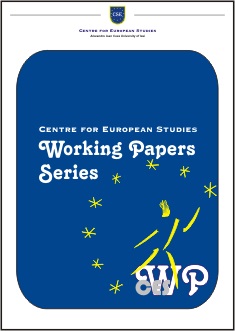THE MANIFESTO ON EUROPEAN CRIMINAL PROCEDURE LAW – FOUNDATION FOR CREATING A COMMON SPACE OF EUROPEAN CRIMINAL JUSTICE
THE MANIFESTO ON EUROPEAN CRIMINAL PROCEDURE LAW – FOUNDATION FOR CREATING A COMMON SPACE OF EUROPEAN CRIMINAL JUSTICE
Author(s): Rodica PanainteSubject(s): Law, Constitution, Jurisprudence
Published by: Editura Universităţii »Alexandru Ioan Cuza« din Iaşi
Keywords: European Criminal Procedure Law; Manifesto; European Criminal Policy Initiative; European criminal policy; legal cooperation
Summary/Abstract: In this article, we propose to analyze the content of the Manifesto on European Criminal Procedure Law of 2013, and how this document can represent a foundation for the legal cooperation of the European states, and also for creating a unique, common space of European criminal justice. Elaborated by the European Criminal Policy Initiative and launched on November 2013, the Manifesto on European Criminal Procedure Law contains the principles and the rules that should be followed by the European penal legislator when gives shape to the laws in the field of Criminal Procedure. This document represents a natural following of the first Manifesto, in the field of substantive criminal law of 2009. The Manifesto concerns mainly the rules and the principles of criminal procedure because, as its authors affirm, this kind of rules have increasingly been shaped lately in European regulations, and also because the regulations in this field must reflect and respect the highest standards of the rule of law, as they must continuously and without exception guarantee the fundamental rights. In this study, we propose to focus upon the legal solutions found out by the authors of the Manifesto in order to attain, during the criminal proceedings, an equilibrium between the interest of the state and even of the Union to realize an effective criminal proceedings, and the individual human rights that are affected, and also an equilibrium between the actual legal order and the traditions of the member states.
Journal: CES Working Papers
- Issue Year: 7/2015
- Issue No: 2A
- Page Range: 566-572
- Page Count: 7

